- Clone
- SJ25C1 (See other available formats)
- Regulatory Status
- RUO
- Other Names
- CD19 Molecule, CD19 Antigen, Differentiation Antigen CD19, B-Lymphocytes Surface Antigen B4, T-cell Surface Antigen Leu-12, CVID3, B4, B-lymphocyte Antigen CD19
- Isotype
- Mouse IgG1, κ
- Ave. Rating
- Submit a Review
CD19 is a 95 kD type I transmembrane glycoprotein also known as B4. It is a member of the immunoglobulin superfamily expressed on B cells (from pro-B to blastoid B cells, absent on plasma cells) and follicular dendritic cells. CD19 is involved in B cell development, activation, and differentiation. CD19 forms a complex with CD21 (CR2) and CD81 (TAPA-1), and functions as a BCR co-receptor.
Product DetailsProduct Details
- Verified Reactivity
- Human
- Antibody Type
- Monoclonal
- Host Species
- Mouse
- Immunogen
- NALM1 + NALM16 cells
- Formulation
- Phosphate-buffered solution, pH 7.2, containing 0.09% sodium azide
- Preparation
- The antibody was purified by affinity chromatography and conjugated with Spark Blue™ 550 under optimal conditions.
- Concentration
- 0.2 mg/mL
- Storage & Handling
- The antibody solution should be stored undiluted between 2°C and 8°C, and protected from prolonged exposure to light. Do not freeze.
- Application
-
FC
- Recommended Usage
-
Flexi-Fluors™ are provided at a standard 0.2 mg/mL concentration. We recommend titrating this reagent to determine the optimal concentration for each application. For many flow cytometry applications, conjugated antibodies perform well at concentrations ranging from 0.03 to 1.0 µg per million cells in 100 µL. We recommend testing a range of concentrations starting from 10 µg/mL.
For example, make five 1:1 serial dilutions of the 0.2 mg/mL antibody. Add 5 µL of each dilution (including the undiluted antibody) to 100 µL of cells (at 107 cells/mL) to test six concentrations -- 1.0, 0.5, 0.25, 0.125, 0.06, and 0.03 µg per million cells in 100 µL volume. Compare staining patterns or create a titration curve using the MFI or staining index to determine the optimal concentration.
* Spark Blue™ 550 has a maximum excitation of 516 nm and a maximum emission of 540 nm. - Excitation Laser
-
Blue Laser (488 nm)
- Application Notes
-
Clone SJ25C1 partially blocks anti-human CD19 clones HIB19 and 4G7 staining based on in-house testing
- Additional Product Notes
-
For more information about Flexi-Fluors™, visit our Flexi-Fluor™ page and review FAQs associated with this product line.
- RRID
-
AB_3106282 (BioLegend Cat. No. 285017)
Antigen Details
- Structure
- Ig superfamily, type I transmembrane glycoprotein, 95 kD.
- Distribution
-
B lineage (except plasma cells), follicular dendritic cells.
- Function
- B cell activation and differentiation.
- Interaction
- Forms a complex with CD21, CD81 and CD225 in the membrane of mature B cells and interacts with VAV and LYN. It also interacts with GRAB2 and SOS when phosphorylated on Tyr-348 and/or Tyr-378 and with PLCG2 when phosphorylated on Tyr-409.
- Ligand/Receptor
- Forms complex with CD21 (CR2) and CD81 (TAPA-1), BCR co-receptor.
- Cell Type
- B cells, Dendritic cells
- Biology Area
- Costimulatory Molecules, Immunology
- Molecular Family
- CD Molecules
- Antigen References
-
1. Tedder T, et al. 1994. Immunol. Today 15:437.
2. Bradbury L, et al. 1993. J. Immunol. 151:2915. - Gene ID
- 930 View all products for this Gene ID
- UniProt
- View information about CD19 on UniProt.org
Related FAQs
- What are Flexi-Fluors?
-
Flexi-Fluors are rapidly made-to-order conjugated antibodies. The technology, manufacturing processes, and specifications used to create Flexi-Fluors are the same as our regular catalog products. However, the optimal concentration and performance of each Flexi-Fluor must be determined by the customer.
- How quickly will I receive my order?
-
We aim to ship Flexi-Fluors within 2-3 weeks of receipt of your order. However, depending on your location, shipping times may vary.
- How are Flexi-Fluors different from regular catalog products?
-
Flexi-Fluors are made on demand, specifically for you. Flexi-Fluors are manufactured using the same high-quality standards, and specifications as other catalog products. For faster delivery, Flexi-Fluors are not tested by flow cytometry to determine optimal concentrations or evaluate performance. This testing needs to be performed by the customer.
- How do I determine the optimal concentration for using my Flexi-Fluor? How should I titrate my antibody?
-
Flexi-Fluors are provided at a standard 0.2 mg/mL concentration. We recommend that you titrate your antibody to determine the optimal concentration to use for your application. For many flow cytometry applications, conjugated antibodies perform well at concentrations ranging from 0.03 to 1.0 µg per million cells in 100 µL volume. We recommend that you test a range of concentrations starting from 10 µg/mL.
For example, make five 1:1 serial dilutions of your 0.2 mg/mL antibody. Add 5 µL of each dilution (including the undiluted antibody) to 100 µL of cells (at 107 cells/ml) to test six concentrations - 1.0, 0.5, 0.25, 0.125, 0.06, and 0.03 µg per million cells in 100 µL volume. Compare staining patterns or create a titration curve using the MFI or staining index to determine the optimal concentration.
- I can’t find the antibody-dye combination that I need. When will it be available?
-
We continuously update our catalog, introducing scores of new products every month. Please get in touch with our Technical Service team for an update on new products or recommendations for suitable alternatives to complete your panel. Or contact Custom Solutions to inquire about our affordable custom conjugation services.
- I need help to validate the performance of my Flexi-Fluor. Who should I contact?
-
Please get in touch with Technical Service for assistance.
- Can I order more than 50 μg of a Flexi-Fluor?
-
Yes, you can order multiple vials of the same Flexi-Fluor products. We cannot guarantee, however, that these vials will be bottled from the same lot. For bulk single-lot orders, contact our Custom Solutions team.
- What is the expiration date of my Flexi-Fluor?
-
Expiration dates can be found on the vial label or by using our CoA lookup tool.
Other Formats
View All CD19 Reagents Request Custom ConjugationCompare Data Across All Formats
This data display is provided for general comparisons between formats.
Your actual data may vary due to variations in samples, target cells, instruments and their settings, staining conditions, and other factors.
If you need assistance with selecting the best format contact our expert technical support team.
-
Brilliant Violet 421™ anti-human CD19
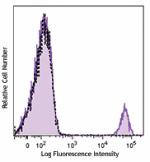
Human peripheral blood lymphocytes were stained with CD19 (c... 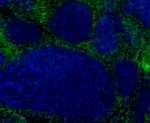
Frozen human tonsil section was fixed with 4% paraformaldehy... -
Purified anti-human CD19
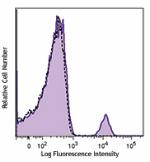
Human peripheral blood lymphocytes were stained with purifie... 
Frozen human tonsil section was fixed with 4% paraformaldehy... -
PE anti-human CD19
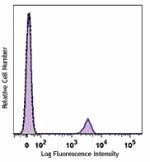
Human peripheral blood lymphocytes were stained with CD19 (c... -
APC anti-human CD19

Human peripheral blood lymphocytes were stained with CD19 (c... -
FITC anti-human CD19
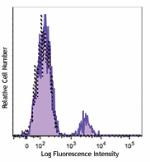
Human peripheral blood lymphocytes were stained with CD19 (c... -
APC/Cyanine7 anti-human CD19

Human peripheral blood lymphocytes were stained with CD20 FI... -
PE/Cyanine7 anti-human CD19
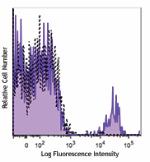
Human peripheral blood lymphocytes were stained with CD19 (c... -
PerCP anti-human CD19
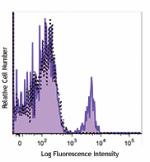
Human peripheral blood lymphocytes were stained with CD19 (c... -
PerCP/Cyanine5.5 anti-human CD19
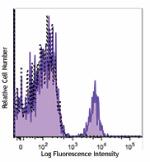
Human peripheral blood lymphocytes were stained with CD19 (c... -
Brilliant Violet 510™ anti-human CD19

Human peripheral blood lymphocytes were stained with CD19 (c... -
Brilliant Violet 711™ anti-human CD19
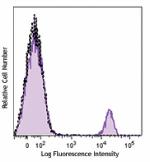
Human peripheral blood lymphocytes were stained with CD19 (c... -
Brilliant Violet 605™ anti-human CD19
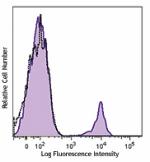
Human peripheral blood lymphocytes were stained with CD19 (c... -
Brilliant Violet 650™ anti-human CD19
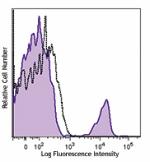
Human peripheral blood lymphocytes were stained with CD19 (c... -
Brilliant Violet 785™ anti-human CD19
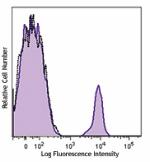
Human peripheral blood lymphocytes were stained with CD19 (c... -
APC/Fire™ 750 anti-human CD19
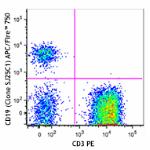
Human peripheral blood lymphocytes were stained with CD3 PE ... 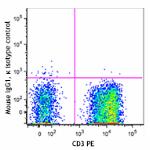
-
PE/Dazzle™ 594 anti-human CD19

Human peripheral blood lymphocytes were stained with CD19 (c... -
Alexa Fluor® 700 anti-human CD19
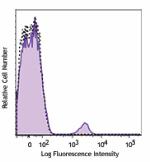
Human peripheral blood lymphocytes were stained with CD19 (c... -
Pacific Blue™ anti-human CD19
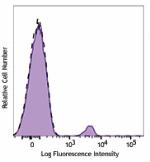
Human peripheral blood lymphocytes were stained with CD19 (c... -
Alexa Fluor® 488 anti-human CD19
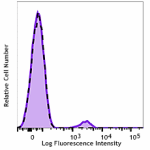
Human peripheral blood lymphocytes were stained with CD19 (c... -
Alexa Fluor® 647 anti-human CD19

Human peripheral blood lymphocytes were stained with CD3 PE ... 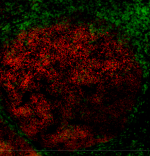
Frozen human tonsil section was fixed with 4% paraformaldehy... -
PE/Cyanine5 anti-human CD19

Human peripheral blood lymphocytes were stained with CD20 (c... -
Spark YG™ 593 anti-human CD19

Human peripheral blood lymphocytes were stained with anti-hu... -
Spark YG™ 581 anti-human CD19

Human peripheral blood lymphocytes were stained with anti-hu... -
Spark Blue™ 574 anti-human CD19

Human peripheral blood lymphocytes were stained with anti-hu... -
PE/Fire™ 700 anti-human CD19

Human peripheral blood lymphocytes were stained with anti-hu... -
Spark Blue™ 550 anti-human CD19 (Flexi-Fluor™)
-
PE/Fire™ 640 anti-human CD19

Human peripheral blood lymphocytes were stained with anti-hu...


 Login/Register
Login/Register 













Follow Us